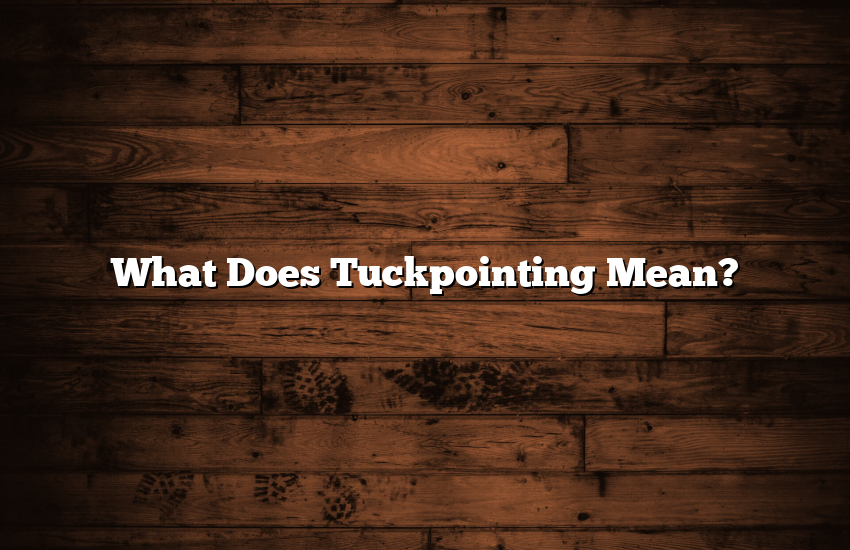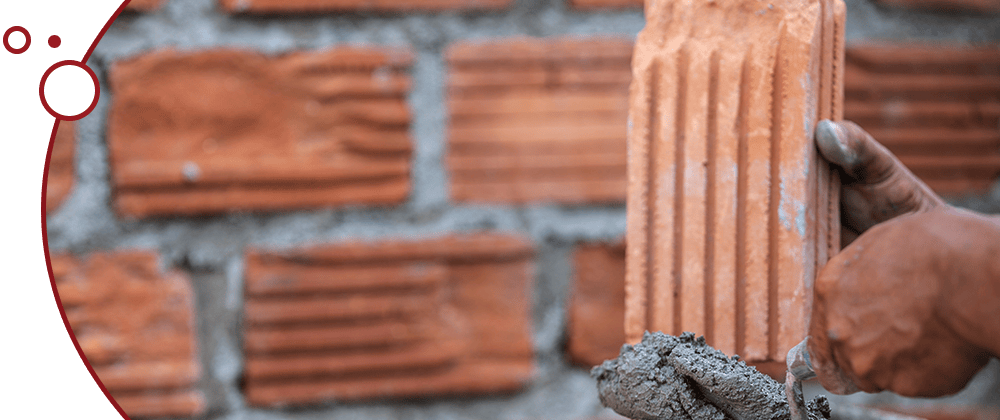
Table of Contents
What Does Tuckpointing Mean?
Tuckpointing is an essential technique in masonry, often used to enhance the appearance and integrity of brickwork. This method involves removing and replacing deteriorated mortar between bricks, followed by the application of a thin line, or ‘tuck,’ of contrasting mortar to create a neat, uniform look.
Understanding Tuckpointing: A Detailed Overview
Tuck pointing, a term often heard in construction and masonry circles, refers to a specific process used to repair and maintain brick structures. Essentially, it’s a method of updating the mortar joints, which are the spaces between bricks. When these joints wear out due to weather or time, tuck-pointing becomes necessary to ensure the structure’s durability and aesthetic appeal.
The Process of Tuckpointing
- Mortar Removal: The old, damaged mortar is carefully chiseled out.
- Mortar Replacement: New mortar, matching the brick color, is added.
- Finishing Touch: A thin line of contrasting mortar is applied.
This process not only reinforces the structure’s strength but also gives it a fresh, new look.
The Importance of Tuckpointing
Why is tuck-pointing so critical? Primarily, it prevents water from seeping into the brickwork, which can lead to significant damage like mold, mildew, and structural weakening. Regular tuck-pointing maintains the building’s integrity and appearance, making it a crucial part of property upkeep.
Tuckpointing: A Historical Perspective
Historically, tuck pointing has been a popular technique in brickwork since the 18th century. It originated as a way to mimic the appearance of high-end rubbed bricks, which were more expensive. Over time, tuck pointing evolved into a standard practice for maintaining and restoring brick buildings.
Conclusion
In conclusion, anyone involved in building maintenance or restoration must understand the crucial meaning of tuckpointing. This process is not just about aesthetics; it plays a vital role in preserving the structural integrity of brick buildings. Remember, proper tuckpointing can save you from costly repairs in the future.
FAQs About Tuckpointing
Q: How frequently should one perform tuckpointing?
A: Typically, one needs to perform tuck pointing every 25-30 years, but this requirement can vary depending on climate and building conditions.
Q: Can I do tuck pointing myself?
A: While it’s possible, tuckpointing requires specific skills and tools. It’s often better to hire a professional.
Q: How long does tuck pointing last?
A: When done correctly, tuckpointing can last for several decades, protecting your brickwork effectively.
Q: Is tuck pointing expensive?
A: The cost varies based on the size and condition of the brickwork. It’s an investment in your property’s longevity.
Q: What’s the best time of year for tuck-pointing?
A: Spring or fall are ideal, as extreme temperatures can affect mortar curing.


